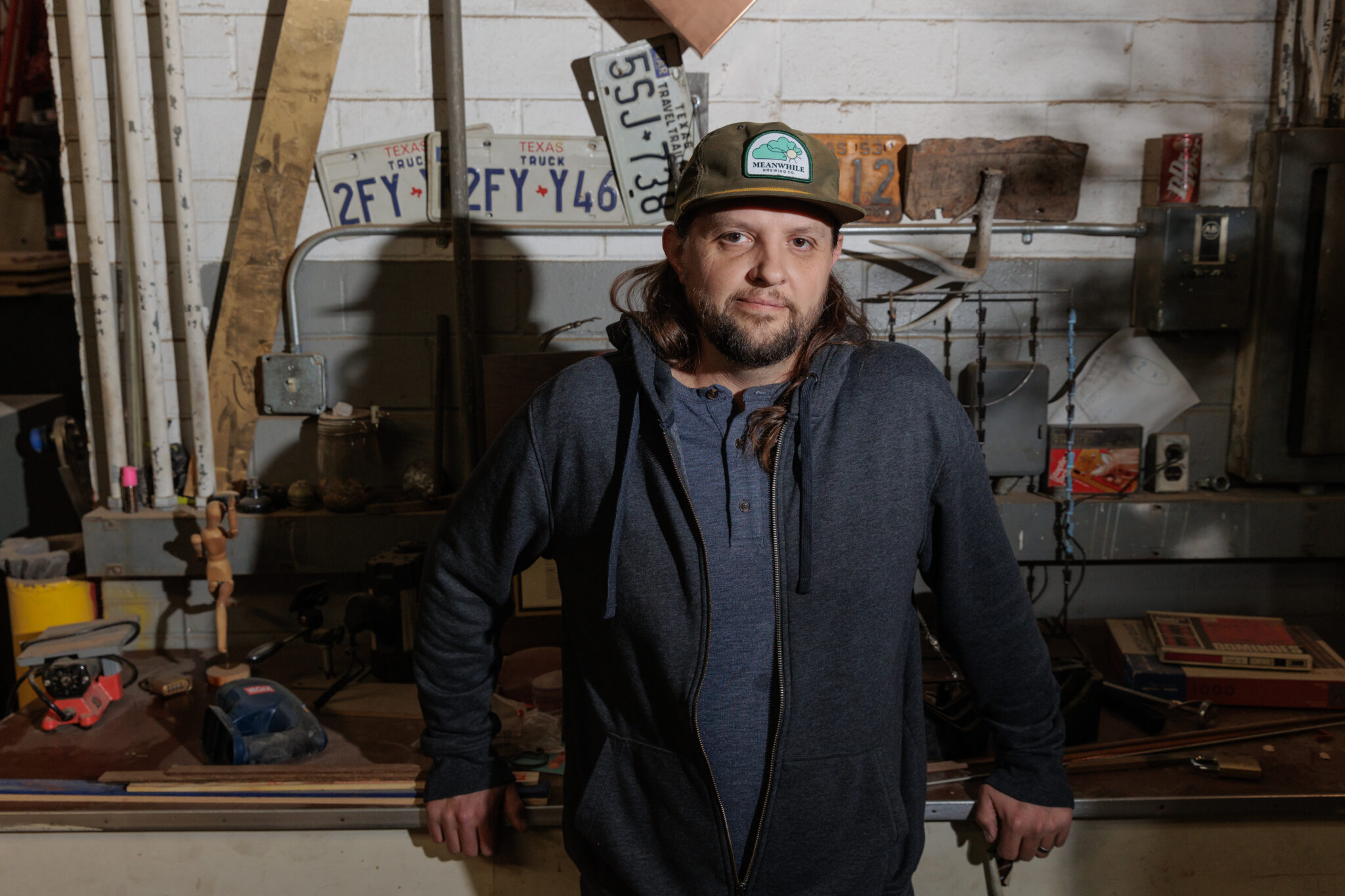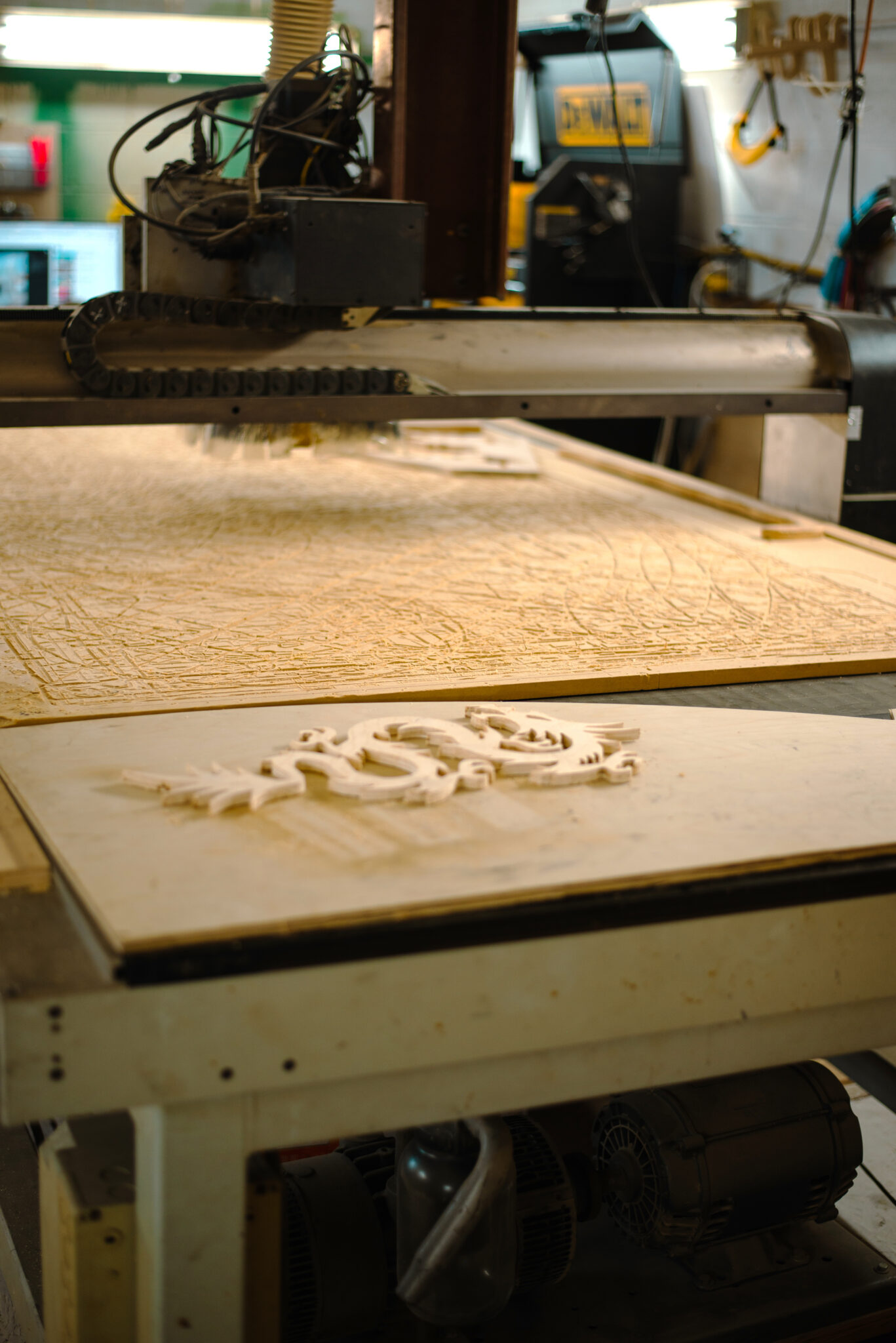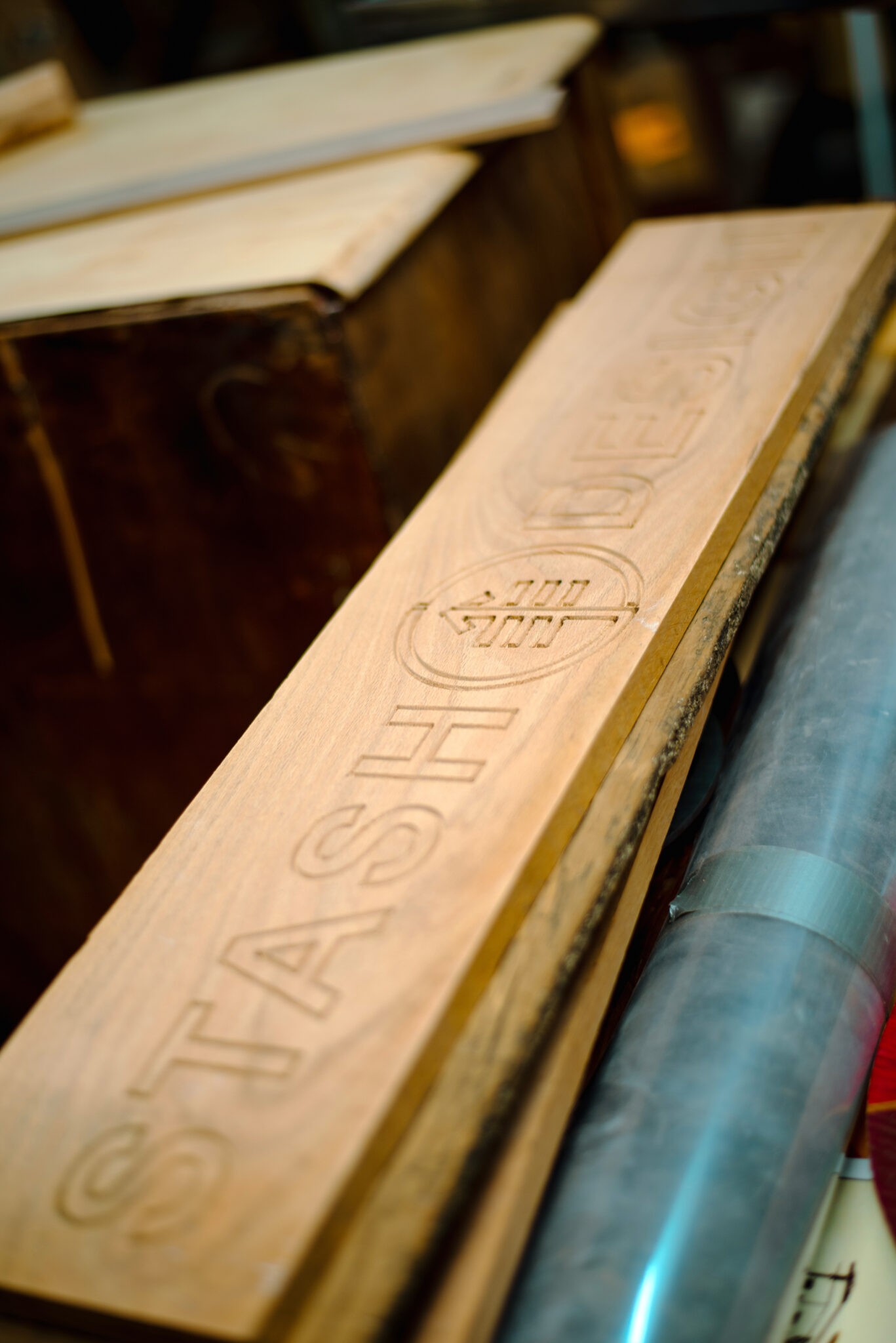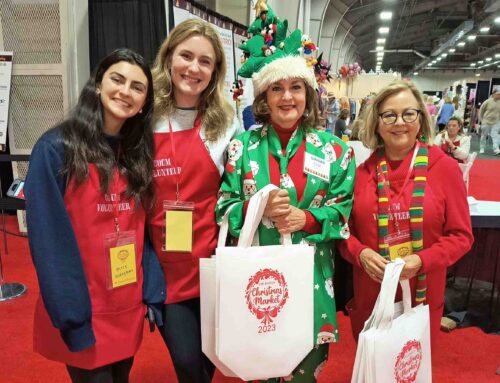In 2015, Delta Industries left its 100-year-old factory to the pigeons; birds and rodents gained entry through portals opened when bandits uninstalled two air conditioning units.
There was talk of tearing down the place (originally the Dixie Wax Paper Company) to make way for apartments. But a couple of neighborhood visionaries, Gary Buckner and Monte Anderson, had another idea.
The plan: Save the building, air out dank hallways where mosquitos swarm over standing pools of water and remove 200,000 pounds of scrap from the roof. Turn it into a place of doers and makers, and rebrand it Tyler Station.
“Most people looked at it all and thought it was too much work to fix,” says Buckner. “To me, I see there are walls, a ceiling and infrastructure, so we can fix it.”
Intent and re-purposes
Buckner, owner of Stash Design and partner in Tyler Station, is loath to give up on an object, be it a discarded toy or a 110,000-square-foot mill from the 1920s.
A front-angle look at the building in 2023 reveals an eclectic array of storefronts — skate shop, book boutique, hair salon, artists co-op, brew house, pet supplier, comic and collectibles trading post.
Stash Design occupies a quarter of the building. His is one of 70 businesses within. On a tour, Buckner greets his neighbors, Oak Cliff Bike Synergy owner Jorge Samano, a couple of shear-sharpening stylists at For the Love of Hair and the “amazing, classically trained woodworker” Sean Springer.
Adapted iron cattle panels, rather than opaque walls, divide the suites, a layout that encourages conversation.
Buckner admires the way fellow occupants find uses for every cranny of the building, he says, pointing to a kiln in a space where pottery classes are held. “It’s really turned out better than I ever hoped,” he says. “They can carve out a space for themselves, and share, and it is affordable.”
In an upstairs office, overlooking his firm’s 25,000-square-foot warehouse, Buckner stands at a white board, marker in hand, attempting to help a reporter grasp his various enterprises and projects.
Tyler Station
Most days, business partner Monte Anderson is the public face of Tyler Station.
But Buckner is the soft-spoken, metal-welding, long-haired and flannel-shirted yin to Anderson’s public-lecturing, investor-courting, close-cropped and sports-coated yang.
At a recent talk about gentrification and incremental development, Anderson pointed at Buckner, who was sipping coffee in the back of the auditorium, and told the audience they’d been “scheming for years and years” to create a space for makers.
“Because of Gary’s influence, we really did this project,” Anderson said. “He’s an artist and a furniture maker and he has all kinds of creative things.”
Add to that real estate investor, tiny-home maker and philosopher, and it’s a start. He’s also building a town.
Stash Design and Stash Signs
Back in the office hang clipboards with business names printed at the top — Longhorn Ballroom, Sketches of Spain, Musume Restaurant, Raising Cane’s, Ritz Crackers, American Airlines, City of Dallas. Those are a few Stash Design (and subsidiary company Stash Signs) clients.
Restaurants, not the only focus, make up a significant portion of Stash clientele.
Buckner, while an artist with an indie heart, enjoys earning money and paying his 12 staffers. In the best cases, when restaurateurs allow him a measure of creative freedom (think Enos, Wild Detectives, Oddfellows), dining establishments make a perfect palette for Buckner’s brand of green, functional art.
Building out Oak Cliff Coffee Roasters on West Davis, Buckner used cast-off parts, metal and wood from a shuttered auto shop across the street.
In one forthcoming restaurant they plan to install bleachers that used to be inside SMU’s natatorium, Stash Design’s chief financial officer Matt Davis says when he joins Buckner in the office.
It’s not just about the environment. People like the story. It’s a marketing point, he says. “SMU students or alumni are going to love that.”
Part of Buckner’s mission is to “help people see trash differently.”
He also wants us to see signage anew. That’s why he launched Stash Signs and brought on Stephen Kirkpatrick, who, using a computer numerical control (CNC) machine, a huge 3D printer-type of equipment, makes business signs art.
Abbas Diba, a graphic designer and Iranian refugee who moved his family to the neighborhood by way of Ireland, also operates the CNC machine, and Buckner says “he can do anything.”
Stash Signs can be seen at Gold Dust Tattoos, Vivian’s Boutique or Starship Bagel, to name a few.
Miller’s Cove
Alongside the rear loading dock at Tyler Station is a 1960s-era Airstream Trailer, which Buckner is retrofitting for a client. The job illustrates Buckner’s gift for maximizing every square inch. He installed floors, marble tile, high-end fixtures, a wine bar, kitchen, toilet and a tub, all inside a 200-square foot trailer.
It’s one of a half dozen silver bullets parked in the Tyler Station lot. He has been turning them into fully functioning homes, because people need them, and glamorous campers, because glamping is a popular pastime.
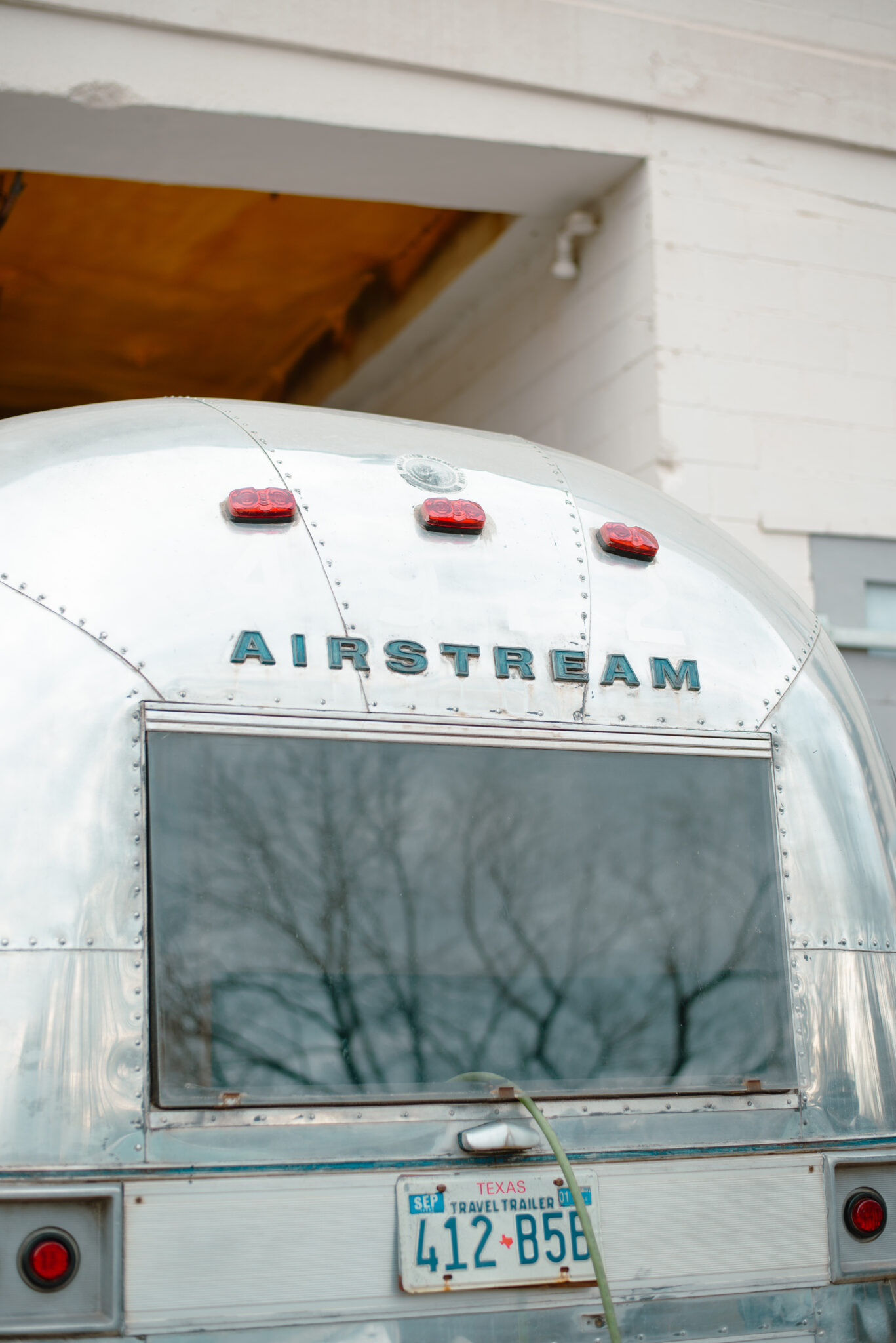 He’s reasonably sure Dallas’ code would prohibit an RV park at Tyler Station, or make permitting too onerous. So Buckner is working on a deal near Mount Pleasant, in a 109-acre burgh called Miller’s Cove, population: 72.
He’s reasonably sure Dallas’ code would prohibit an RV park at Tyler Station, or make permitting too onerous. So Buckner is working on a deal near Mount Pleasant, in a 109-acre burgh called Miller’s Cove, population: 72.
There, 111 miles from Oak Cliff, he plans to turn an old race track into an event center (for concerts and quinceaneras) and create a destination RV park with long- and short-term rentals.
He and Miller’s Cove business partner Justin Treaster say this project could be both a housing solution and a “lifestyle solution.”
They envision sustainably remodeled tiny homes and trailers with solar panels, “where you won’t have to tax the crap out of people,” Buckner says.
CAB Station
Meanwhile Buckner is a minority shareholder in a Gainesville project.
Denton County entrepreneur James Combs is redeveloping a 60,000-square-foot building, and the plan sounds familiar. Save an old mill, install solar panels, use repurposed and upcycled materials to contemporize and transform the block into a haven for doers and makers.
This Tyler Station cousin is called CAB Station (for Community and Business).
Combs has said he wants to give it a “resto-mod feel.” Restored and modified is Buckner’s modus operandi, and he is charged with designing the lower level with about 200 small vendor booths inside. It will be modeled after Tyler Station, Buckner says CAB is just the beginning. CAB and Tyler Station offer “a model that can be used anywhere in the world.” This brand of development is about building wealth and opportunity within neighborhoods and among local independent business owners rather than developers from out of town, Buckner and his partners believe.
As Anderson said during his lecture, “It takes a village to raise a child, and it really does takes a whole community to develop a building.”

